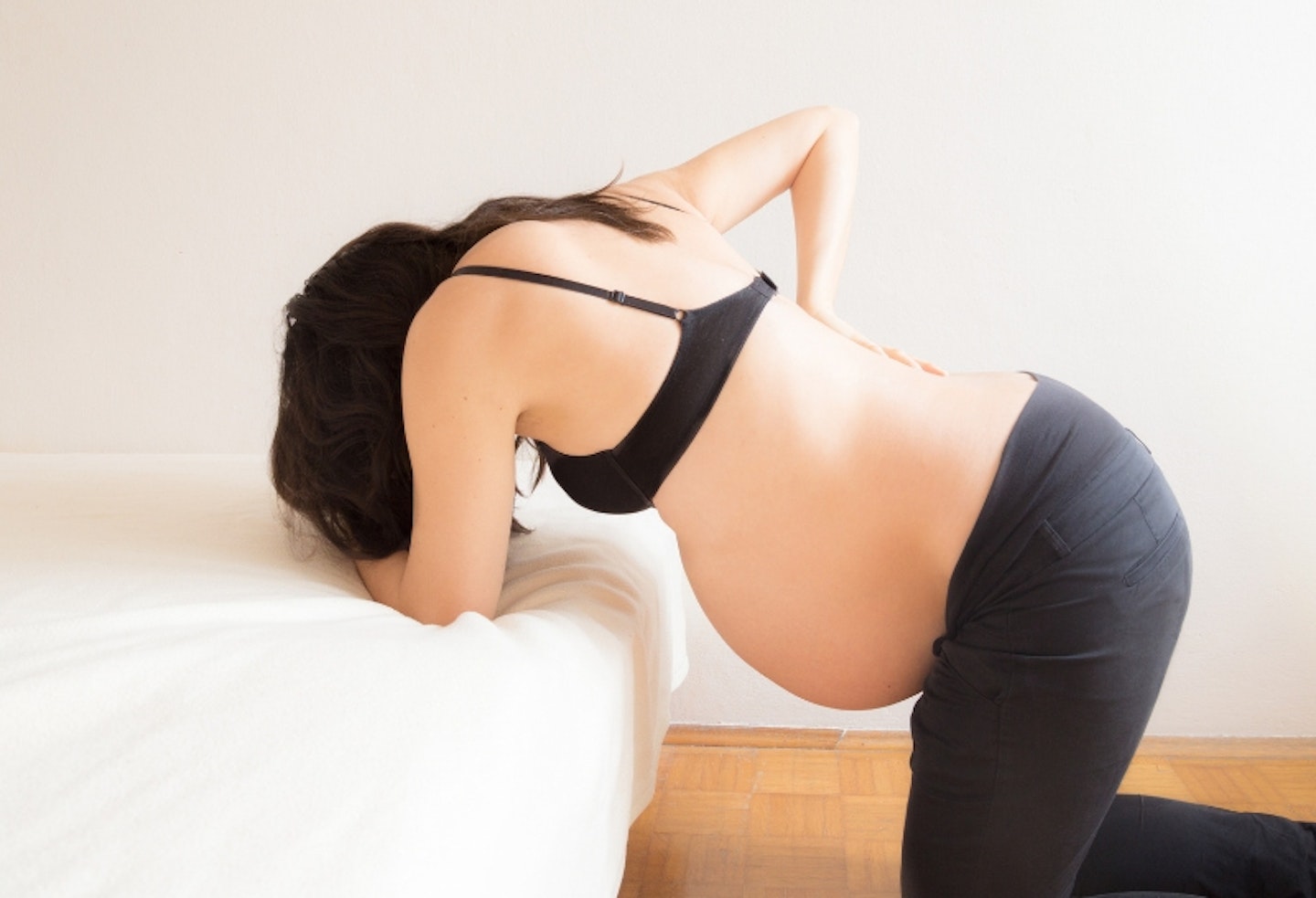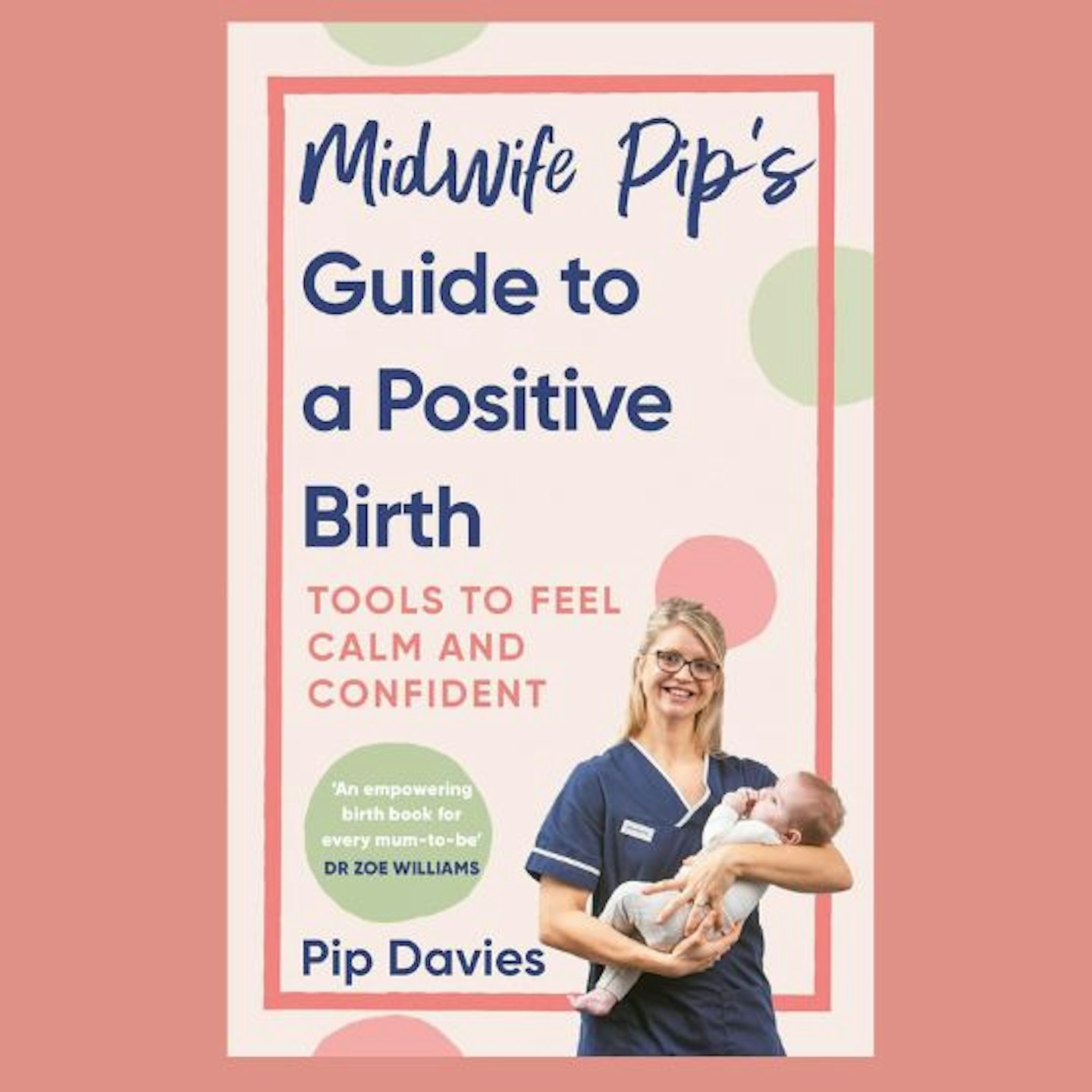Chances are, most, if not all, mums-to-be want to have a positive birth. But what is a positive birth? Is it a drug-free, spontaneous, serene experience? Or is it one where you feel empowered to deal with any scenario and where your individual choices matter and are heard? When it comes to having an empowered, positive birth experience, preparation is key so we've spoken to Midwife Pip, author of Midwife Pip’s Guide to a Positive Birth to find out how you can have a positive birth, how to maintain that positivity if things don't quite go to plan, and how your partner and birthing team can support you.
What is a 'positive birth?'
As Midwife Pip says, "a positive birth is how a woman feels at the point of bringing their baby into their arms, not the way it might look on paper". What that actually feels like will differ from woman to woman. "So often, women feel like a positive birth can only be accomplished if they have a completely spontaneous, unmedicated birth where there's nice mood lighting and minimal pain relief and intervention. But actually a positive birth can 100% be achieved with emergency cesarean sections, the use of epidural, induction of labour or medical intervention," explains Pip. "The key to that is women having a comprehensive understanding about their options and making informed choices around their birth, so that they are in control."
So at the heart of many positive birth stories lies empowerment and control, both of which can be achieved through preparation and knowledge. As Pip says, "you can't make empowering decisions if you don't have the information, hopefully ahead of time, to actually have that control and to take the reins so things don't feel scary." By preparing for birth early on in your pregnancy, you can start to look at different scenarios and outcomes and take the time to figure out what's important to you so you can advocate for yourself in labour and birth.

How to prepare for a positive birth experience
Preparing for a positive birth is about more than attending your antenatal classes or practising hypnobirthing. It's about asking yourself what the ideal birth looks like to you, questioning any scenarios that cause you anxiety, and arming yourself with information. Pip encourages parents to consider what is important to them and why. "I always emphasise that if there are elements of birth that really trigger you, that you feel really worried about, they're the types of birth to make a plan for".
As she says, planning for the completely straightforward, unmedicated, spontaneous birth is almost unnecessary because if everything's going that smoothly, there's really no need for a plan. Where birth plans come in useful is in providing you with the tools and knowledge to be able to make decisions if there are twists and turns.
Pip emphasises that if there are interventions or procedures you don't want, perhaps because of fear - for instance an induction or forceps - take the time to find out more about them. If you're offered these there's probably a reason and, as Pip says "we should never be in a place as birthing women, where we are making a decision based on fear. If our decision is based on fear, we are automatically in a place of disempowerment, and we deserve better."
So if there is an area of birth that scares you, that's something to unpick and address with your team ahead of time. If you have all the information around that scenario, you'll be able to make an empowered decision. "It may be the exact same outcome, but the way that you've got to that decision is very different, and that's really key in us having control over our own journeys" explains Pip. "Yes, there are twists and turns. It may not be Plan A but that doesn't mean your whole birth is then not positive, or it's traumatic or disempowering, providing you're well equipped to understand your options and how to have those conversations and make those informed choices."
Essentially, it's about going into labour with tools and knowledge and having thought about all the potential scenarios so that if someone recommends you be supported to birth with forceps, you're prepared and know what to expect. If you've thought through the potential outcomes, unpicked your responses and learnt more about what they involve, you'll be better placed to make decisions. Pip sums it up as "If that is going to be offered to you, what's the plan?"
Create a positive birth atmosphere
Part of helping women to have a positive birth experience, in whatever form that may eventually take, is creating an atmosphere that you control. As Pip says, "the environment is something you can always control and it really allows you to create a little bubble that feels personal to you". Part of this involves taking all five senses into account - sight, smell, sound, touch and taste - and deciding what makes you feel calm and relaxed.
Pip tells us that this means "really thinking about those five senses, what appeals to you, what makes you feel good, what gets your oxytocin flowing, and then creating this little package, handing it to a birth partner, and making sure that wherever you go during labour and birth, that is scooped up and brought with you." As she explains, your birth partner's job is to "create a birth bubble around you wherever you may be, so that might be at home, it might be an ambulance transfer if you're having a home birth and you get transferred in, it might be in the hospital, or in a theatre setting."

Positive birth: how partners can help
As well as creating this positive birth atmosphere, birth partners are, as Pip describes them, "powerful". She goes on to say "there's real evidence now that shows that a good, supportive birth partner reduces the risk of medical intervention. So if that's something that's important to you, making sure your birth partner is on board is vital."
Again, this should form part of your preparation for birth. Talking to your birth partner and making sure they know what you want, and how they can help you to achieve that, is key. This could involve practising different birthing positions or breathing techniques in preparation. "You want to practise a few different things - different breathing techniques, counting techniques, different positions - and know that when you go into labour, you will completely disregard some of them and that's fine, because we don't quite know what's going to work until we're in it."
As she says, "play around with different kind of tools and techniques, have them all in your little imaginary toolbox, and then you know you can file through them during labour and birth to pick out what works at that time."
It's also about bringing your partner into the process, so they're more than just a bystander. While you will always have the final say, your partner can be an advocate if they know what you want, and how to help you to get it. "So it's about having a discussion beforehand and maybe practising at home, but then allowing women in labour to be really instinctive with the way they move and supporting that environment. For instance, making sure there are things that she can lean on, balls that she can bounce on, and if you notice that they're staying in one position for a prolonged period of time, encouraging some movement, encouraging hydration, nutrition, and emptying her bladder".
Take a pause
Pip tells us that she encourages women to have a "pause button". If you're in labour and you're not quite sure what's been said or feel like things are happening to you instead of with you, Pip says to "never be afraid to just say, 'can we all just pause? I'm not sure what's going on right now'." That gives everyone a chance to step back and realise that maybe they haven't explained something clearly, or have used terminology you're not familiar with. Again, this can be something to discuss with your partner beforehand. As Pip says, "there is always time for communication, even in real emergency situations. It might be that someone is popping a gown on you but talking to you at the same time - there's always time for that split second of communication that can make a really big difference. So don't be afraid just to ask for a quick pause if you need it."
Pip also advocates the use of the BRAIN technique, which stands for:
B - what are the benefits?
R – What are the risks?
A - What are the alternatives?
I - What is your intuition telling you?
N – What happens if we just wait or do nothing?
Using this acronym gives you the tools to stop and run through the steps when faced with a decision, rather than going into fight or flight mode. "If you are faced with any decision on your pregnancy, birth or even postnatal journey, you can run through with your practitioners; what are the benefits, what are the risks, what are the alternatives? What's my intuition telling me and what if I do nothing?" This allows you to make sure you're weighing up the pros and cons, but in a really comprehensive way. Pip gives the example of induction. "You might be offered an induction of labour for a wide variety of reasons, but you can go through the BRAIN list: what are the benefits versus the risks? What are my alternatives?" She suggests printing it out so that you can use it to run through questions with your healthcare team if decisions need to be made.
What happens when the birth plan doesn't go to plan?
Part of the preparation for a positive birth and reducing the risk of birth trauma is thinking through different outcomes. As Pip says, "there's lots we can do to improve our chance of having the birth outcome we want. There's a lot that is within our control. However, there are also elements that aren't within our control". Giving birth is about finding a way to navigate between the two people involved - mum and baby - during labour and birth. Even if there is a twist or turn that you didn't want to happen, it's not your fault. Pip confirms, "that shouldn't trigger any blame. It was something that was necessary to bring your baby into the world safely, so take empowerment from the fact that you were able to ride that journey with your baby. Because there are two people communicating on a labour and birth journey".
If your birth didn't go to plan, Pip notes that it's important to address that. "It's really, really important to talk about it. The Birth Trauma Association is fantastic, or speak to your midwife. Most hospitals now will have a birth debrief service where you can go through your notes with a medical practitioner to get some clarity." She also emphasises the importance of speaking to other mums and sharing stories. "Don't suppress those feelings. Often, if women do suppress those feelings and they go on to have a subsequent pregnancy and birth, they rear their head again. So make sure you address them at the time."
Pip gives the example of a mum in her Your Pregnancy Journey programme who had experienced a traumatic first birth and was convinced she had to have a planned c-section. As Pip notes, this was a decision "purely based on fear because she was so scared of the same thing happening but she knew she would probably have elements of regret if she didn't explore other options. So she put in an incredible amount of physical and psychological work, deep diving into what happened last time and really making informed decisions, and she had the most positive birth!" She goes onto say, "It's important for mums who have had a difficult birth previously to know that you don't have to just make decisions based on fear. It is possible to have that positive and empowering second birth that sometimes feels really hard to achieve when you've experienced something quite different beforehand."

Bringing positivity into the postpartum period
The tools you learn during pregnancy, around breathing, communication, advocating for your own needs, and finding support networks, can be carried across into the postpartum period. Pip says, "the techniques such as breath work that ground you and calm your nervous system can almost be more powerful postnatally than during birth." She mentions techniques like skin-to-skin which are often associated with the immediate golden hour post-birth but can be done for as long as you and your child want to, to release oxytocin.
She compares the Matrescence period to adolescence, where we're going through a huge transition. "I think we have this idea that we shouldn't change when we become mothers, that we should be able to continue with all the things we did before. But we can't, it is meant to change us, and that's okay". She continues, "that's exactly what that initial phase of motherhood is like, and it is designed to challenge and test us and that's normal, and we're not meant to do it alone. It's not meant to look perfect. It's meant to be a bit messy and a bit muddly."
Just as having a supportive birth partner was important during birth, she emphasises the importance of finding your village. "That support could be friends and family, if you're fortunate to have people nearby, paid support if you're able to, or maybe just lessening your standards, lowering that bar." As she points out, how motherhood looks is up to you. "I always say, we can write our own job description of motherhood. It's not someone else's job to do that. We can set our own standards and measure ourselves against those standards, not against what we might see on social media, or what Aunt Julie thinks our standards should be," she says with a smile, noting that her own standards had to drop this week while her children and husband were ill but may well be higher when they're better.
She also notes that while baby massage classes or sessions at your local library can be a great way of meeting mum friends, your support network doesn't necessarily have to be close by. "We live in a society where lots of us have moved away from friends and family, and therefore we may need to build more of a virtual village." As she points out, this virtual village has its benefits for mums who might be in more of a 24/7 timezone with night feeds. "The reality is, at 3am you can't physically go and meet someone for a cup of coffee, so just being able to message another mum is really powerful. So definitely don't underestimate the power of a virtual village." The YPJ programme, (Your Pregnancy and Postnatal Journey) has a community element, which she points out is vital. "We recognise how much we need a tribe of other people, both experts in in the various fields, but also other parents, other mums, on the journey at the same time as we are, and how much of difference that makes."
Positive birth: Making empowered choices
In essence, when it comes to having a positive birth, Pip emphasises there is no right or wrong way to welcome your baby into the world. "Every type of birth can be equally positive and empowering if you understand your options, if you are able to take control, and adequately prepare." She compares preparing for birth to training for a marathon. "Birth is your marathon and pregnancy is your training period - we wouldn't sign up for marathon, sit on the sofa for nine months and then two weeks before, start reading about marathon training and what trainers to buy." The same applies to pregnancy and birth and Pip finishes by saying that allowing yourself to start early, take your time and be properly prepared for birth can have a truly profound impact on the outcome.

This comprehensive guide to having an empowered, positive birth takes you through every stage of preparation for pregnancy, labour, birth and beyond. Tips, tricks, information, and education - you can think of it as a personal antenatal class. Whether it's your first or your fourth baby, you'll discover everything you need to know about harnessing the connection between mind and body, creating the right birth environment, positions for labour, how your birth partner can support you, how to make informed decisions, postpartum care, and much much more!
About the expert
Midwife Pip is a truly passionate midwife and advocate for the profession, bursting with knowledge. Pip is an experienced, practicing Midwifery Sister, MSc graduate, founder of Midwife Pip Podcast, Hypnobirthing and Antenatal Educator, co-author of published research and very importantly, a mum.
About the author
Rebecca Lancaster is a Digital Writer for Mother&Baby, drawing on ten years of parenting her two children to help others navigating their own parenting journey. As a freelance writer, she spent ten years working with leading lifestyle brands, from travel companies to food and drink start-ups, and writing everything from hotel reviews to guides to the best British cheeses. She’s particularly interested in travel and introducing her children to the excitement of visiting new places, trying different foods (less successfully) and experiencing different cultures.
